The Human Design System ©
The Human Design Bodygraph – the ‚Rave Chart’
The Bodygraph (Rave Chart) is the visual essence of the Human Design System. It combines all of the HD information in a graphic synthesis, which can be grasped intuitively. The Rave Chart is a clear and simple depiction of the human structure. Everything in the graphic is related to the human body. It is like a wiring diagram that shows the connected information and gives us deep insights into our inner functioning.
Every Rave Chart contains:
Centers, Channels and Gates
The 9 Centres are connected by 64 Gates, the 2 gates which connect 2 centres together form a Channel.
The Databank:
The Databank – the astrological information is translated into the Hexagrams and Lines of the I’Ching and is then copied into the according Gates of the Bodygraph.
e.g. Sun in 3°30’ Gemini – corresponds to Hexagram 20, 4th Line.
The Bodygraph derives from 2 calculations:
Personality & Design
e.g. Bob Dylan, Mai 24th 1941, 21.05 Duluth, Minnesota
Personality: Mai 24th 1941, 21.05 (local) Design: February 24th 1941, 12.18.19 (GMT)
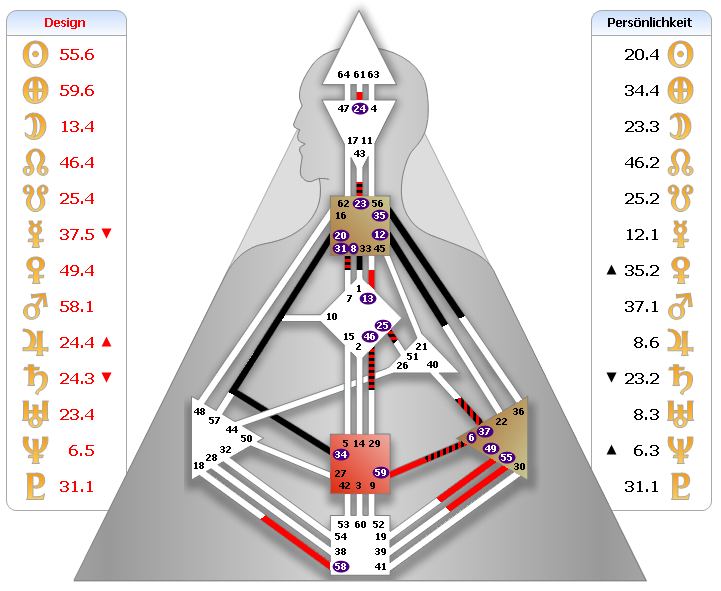
- The first calculation – Personality: uses the moment of birth (written in black, birth right side, data)
- The second calculation – Design: uses the moment exactly 88° of the sun (approx. 3 months) before birth (written is red, left side)
At the Design-time the development of child’s body in the womb has reached a stage when it can take in its ‘soul’, its awareness. To put it figuratively: the biogenetic ‘vehicle’ takes in the ‘passenger’, the awareness of the personality.
The Personality-data represents the conscious and is shown in black, the Design-data represents the unconscious and is shown in red.
The Centers
The Centres of the Human Design System© are based on the ancient Indian ‘chakra-system’. In HDS every centre is associated with a specific function, which can either be fixed or open in the ‘construction plan’. The definition and connection of centres also shows the four basic ‘types’ of human beings.
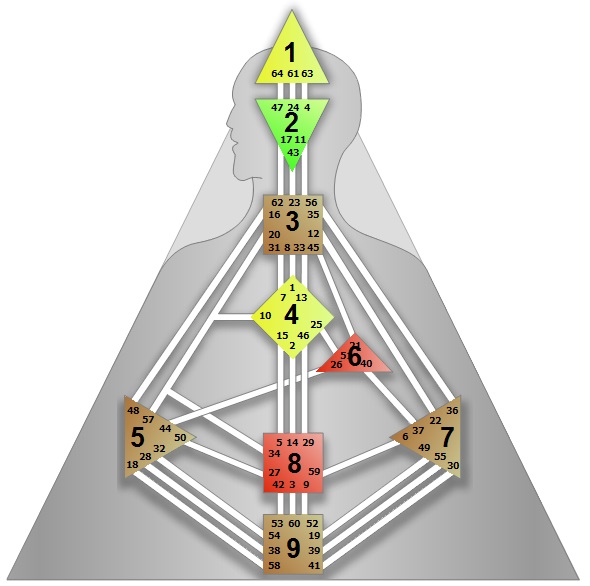
Root Center (9)
This area represents stress and adrenalin. It is one of the four body’s motors. Here you can either read the (kind of) openness for stress or which basic existential forces are driving this specific being.
Sacral Centre (8)
This area represents physical strength and sexuality. It is one of the four body’s motors. Here you can read if and how consistent energy is available for this being. It is activated for about 70% of humanity and creates the type of ‘Generator’.
Solar plexus Centre (7)
This area represents emotions and feelings. It is one of the four body’s motors. Here you can read if and how somebody is open for and takes in emotions of others, or what kinds of emotions are consistent for them.
Ego Centre (6)
This area represents willpower. It is one of the four body’s motors. Here you can read if and how consistent willpower is available for this being.
Splenic Centre (5)
This area represents instinctive and intuitive awareness. Here you can read if and how consistent and reliable spontaneous intuition is available for this specific being, and also the general functioning of the immune system.
G Centre (4)
This area represents identity, direction and love. Here you can read if and how somebody is open for various directions in life, or if they are fixed to certain topics of direction and love.
Throat Centre (3)
This area represents language, manifestation and action. Here you can read if and how somebody can speak and/or act. The numerous possibility of connections to other centres are especially important and are related to ‘Type’.
Ajna Centre (2)
This area represents intellectual awareness and the mind. Here you can read if and how somebody is open for intellectual information, or if they think in a consistent and reliable way.
Head Centre (1)
This area represents mental stimulation and inspiration. Here you can read if and how somebody is open for (outside) mental stimulation or if they process stimulation in a fixed and reliable way.
Definition
If the astrological information leads to the activation of a whole channel (2 Gates opposite each other) both associated centres will be coloured in. This is called ‘Definition’.
The Bodygraph shows us:
- The reliable part of any personality:
What is reliable within us, what we can work with. Any defined channel is activated permanently. This is where we are fixed and unique, unmistakably ourselves. Some of this will be conscious, some will be unconscious. - The open part of any personality:
What is not fixed within us, where we are open, where we can learn and adapt. This is where we can be influenced and conditioned. Open centres show us what kind of ‘courses’ we have to book in the ‘school of life’. Here too some will be conscious and some will be unconscious.
The bodygraph is the foundation of all HD analysis. Its unique form allows:
- to identify the individual structure of any given human being in a graphic and easily graspable way.
- to identify the influence of any moment in time (past, presence and future), the so called ‘transits.’
- to identify what is bonding and/or separating two people.
Definition is an active, constant and reliable part of your personality. In your personality ‘map’ – your rave chart – there are 5 different possibilities of definition:
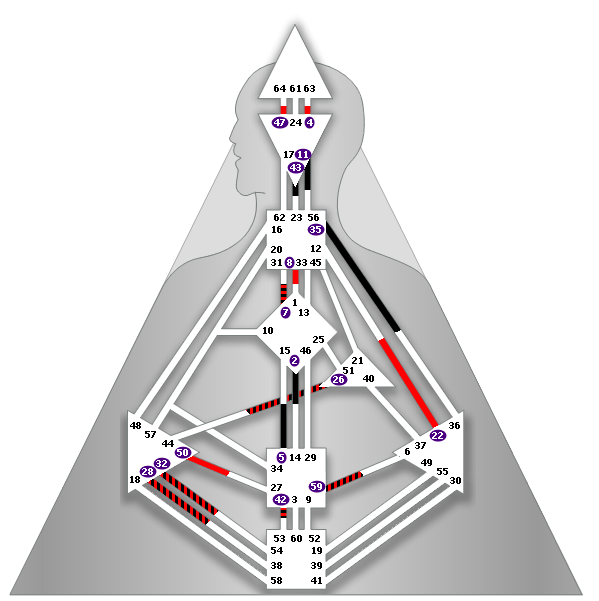 1) no definition about 1% of human beings – the so called Reflectors – have no activated areas in their chart. |
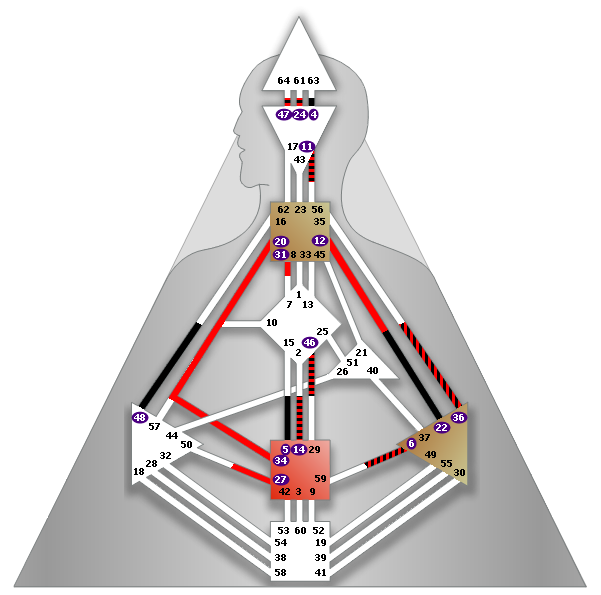 2) single definition all activated areas (centres, groups of centres) are connected to each other |
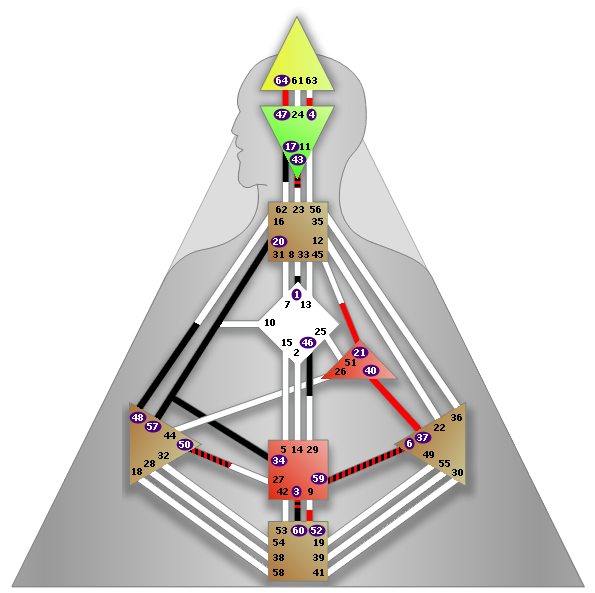 3) split definition two activated areas are not connected to each other (the famous: “Two souls, alas, are housed within my breast.”) |
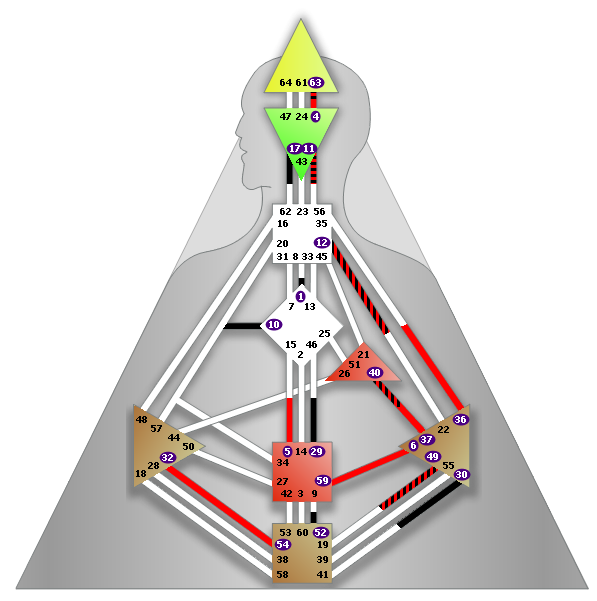 4) triple split definition three activated areas are not connected to each other. |

5) quadruple split definition |
The 4 Types
In spite of the huge individual diversity mankind can be divided into 4 basic Types. Type and the according Strategy show the fundamental behaviour and how to interact with others. There is clear statistical proof of the existence of Type and it is the starting point of any HD analysis. Through strategy any type can learn their correct behaviour and how to minimize (inner and outer) resistance.
The 4 Types are:
Manifestor:
One or more of 3 motor centres (ego, root, emotion) are connected to the throat centre, the sacral centre is open.
‘Energy Type’ (like the Generator)
Mode: to do
About 8% of the population are Manifestors. They are a minority and they are here not to be restricted. They are pure energy people and doers, here to act. But their acting very often meets resistance, especially manifestor children are punished for it. To lower or avoid resistance (and the corresponding anger) manifestors should inform others before they act.
Generator
The sacral centre is activated
‘Energy Type’ (like the Manifestor)
Mode: to wait
About 70% of the population are Generators. About half are ‘pure Generators’, the other half are ‘manifesting Generators’ (at least on motor is connected to the Throat). If Generators try to act like Manifestors they meet a lot of resistance and their life is full of frustration. Generators should wait for things to come towards them, so that they can respond and react. Their strategy means: don’t be initiative, stop running after things, just wait and respond to what turns up.
Projector
The sacral centre is open, the throat centre is not connected to a motor.
‘Non-Energy Type’ (like the Reflector)
Mode: to wait
About 21% of the population are Projectors. Their gift is to know how to handle energy, they are here to work with the energy of both Generator and Manifestor, to guide and lead them. The Projector functions best if they are recognized for what they are. The strategy is: wait for recognition and invitation – invitation to love, job, marriage… They are not here to be initiative but to wait until they feel welcome and are invited.
Reflector
All centres are open.
‘Non-Energy Type’ (like the Projector)
Mode: to wait
Only about 1% of the population are Reflectors, they are the rarest Type. They are very open, there are no activated (coloured) centres in their charts and therefore they take in others very deeply. If a Reflector understands their nature they can become very wise, but often they experience life as a big disappointment. The key for a Reflector is the moon. A Reflector should wait a full moon’s cycle (28 days) before arriving at any big decision.
Profile
The 12 different profiles show the basic way of how people live their lives. Exact information of course is always based on the interplay of all the different details within a chart.
|
|
|
|
|
|
|
|
|
|
|
|
Inner Authority
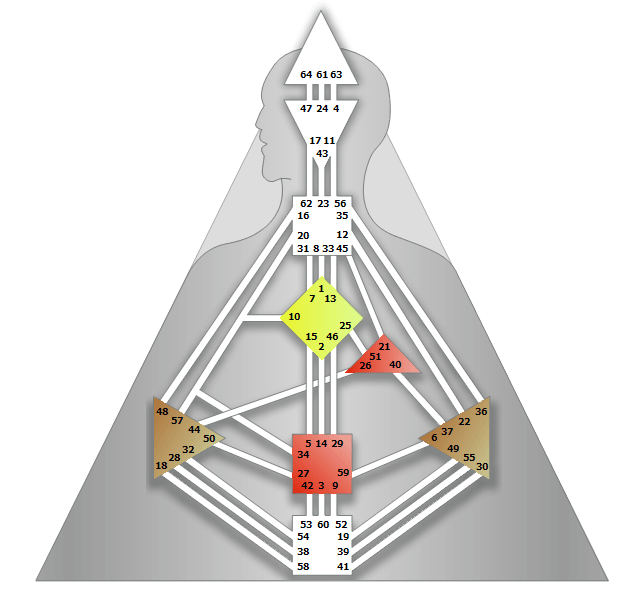
 Inner Authority is the place within us from which we can arrive at authentic decisions. This leads us deep into the Human Design System and we cannot elaborate on it here. One very important notice: if the ‘Solarplex center is your inner authority you should wait before deciding anything. To sleep over it at least once should be the minimum!
Inner Authority is the place within us from which we can arrive at authentic decisions. This leads us deep into the Human Design System and we cannot elaborate on it here. One very important notice: if the ‘Solarplex center is your inner authority you should wait before deciding anything. To sleep over it at least once should be the minimum!
Strategy
In Human Design the four Types each have a specific strategy how to live and decide as themselves.
1) The Generator Strategy is to respond. Wait until you are asked in whatever way and feel a reaction within you.
2) The Projector Strategy is to wait for invitation. You can only use your energy correctly after you have been recognized and (formally) invited.
3) The Manifestor Strategy is to inform. Inform your environment before you act and this way create allies instead of people who distrust you.
4) The Reflector Strategy is to wait about 1 month. Only over time and with a lot of ’reflection’ (and in exchange with others) can you become clear about any decision.
Not-Self theme
If the four types are not correct in their decision making process the following ‘Not-Self themes’ will show up. This is a good possibility to check if you live who you are.
1) The Not-Self theme of the Generator is frustration. If you do not wait for your response you will meet resistance and end up frustrated.
2) The Not-Self theme of the Projector is bitterness. If you do not wait to be seen (recognized) and invited you will meet resistance and become bitter.
3) The Not-Self theme of the Manifestor is anger. If you do not inform before acting you will meet resistance and become angry.
4) The Not-Self theme of the Reflector is disappointment. If you do not take your time you will meet resistance and become disappointed.
Design Date
the second date (in red) on your chart is used for working out the unconscious, physical part of your personality and represents in many ways the ‘missing link’ for recognizing the whole picture.
The Incarnation Cross
The conscious and unconscious sun/earth axis together form a ‘cross’ in the wheel of the zodiac. It represents a basic ‘headline’ for any life with a profound and nearly unlimited depth. The interplay of all aspects of a rave chart results in an amazingly exact picture of any personality, where the purpose and personal meaning of life can be seen and read very clearly.
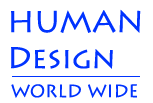
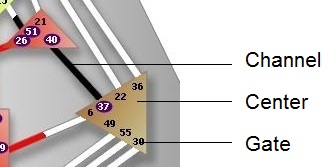
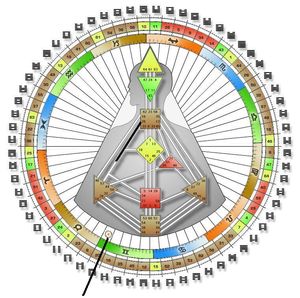
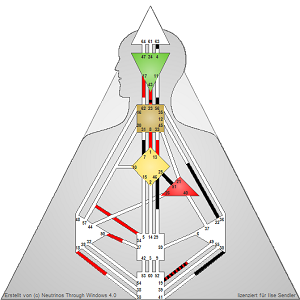
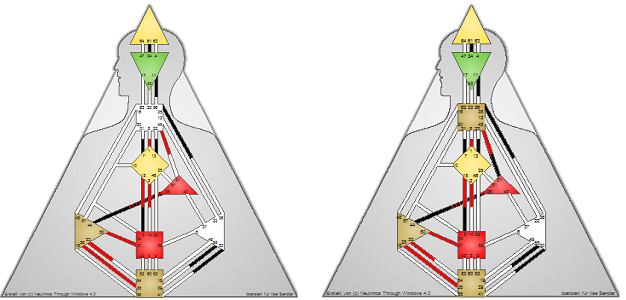
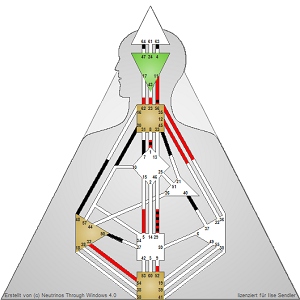
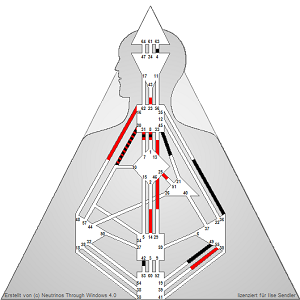
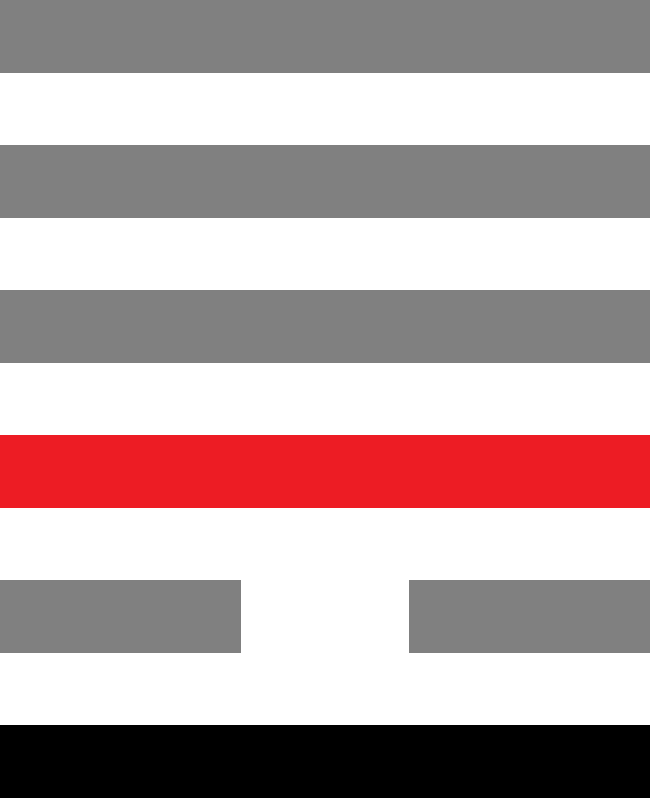 Profile 1 / 3
Profile 1 / 3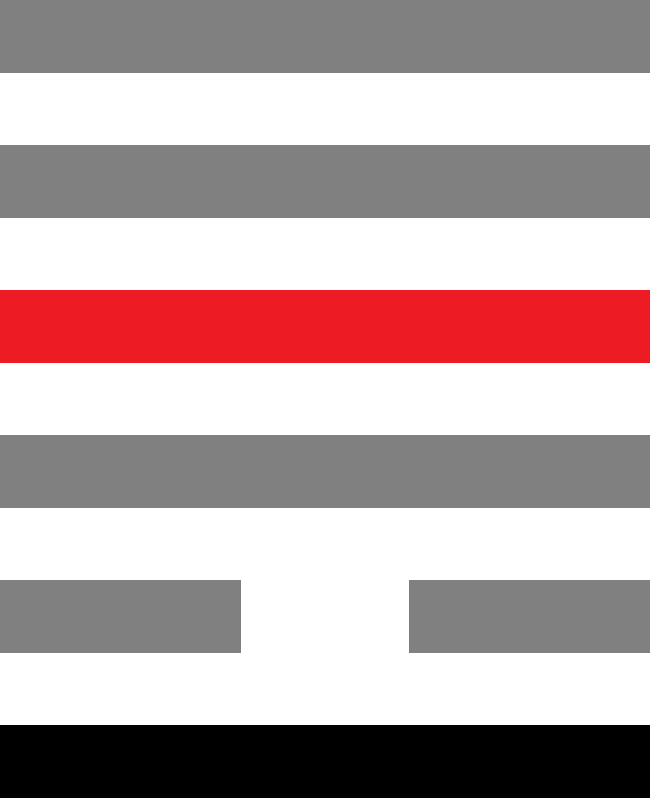 Profile 1 / 4
Profile 1 / 4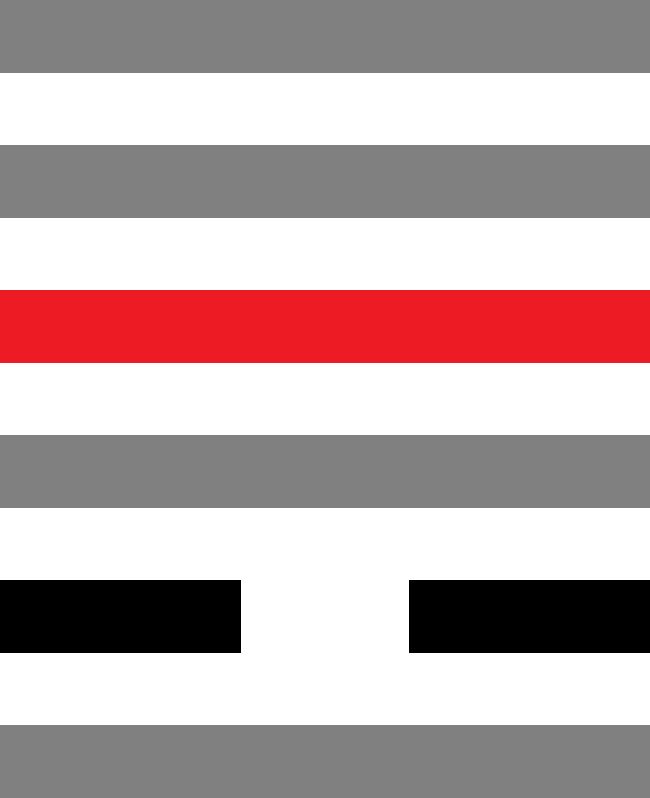 Profile 2 / 4
Profile 2 / 4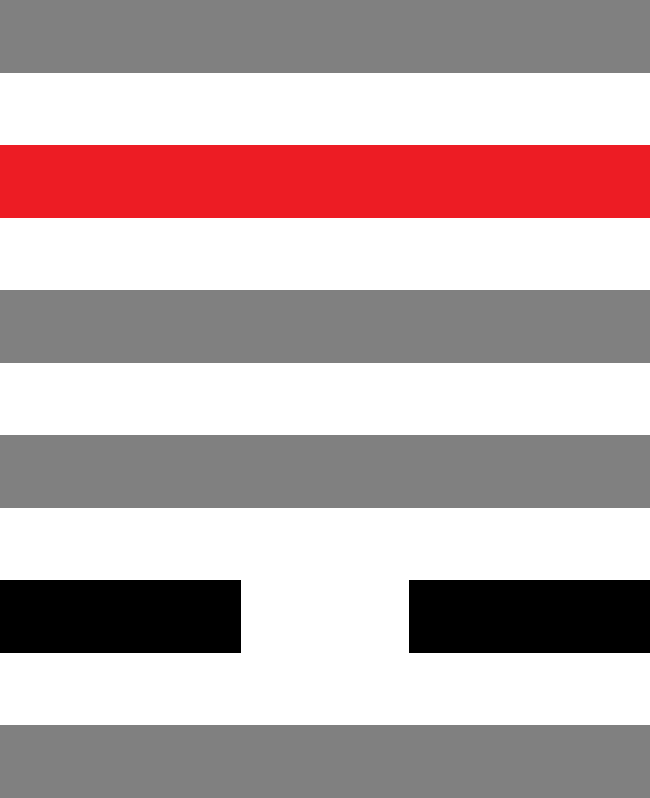 Profile 2 / 5
Profile 2 / 5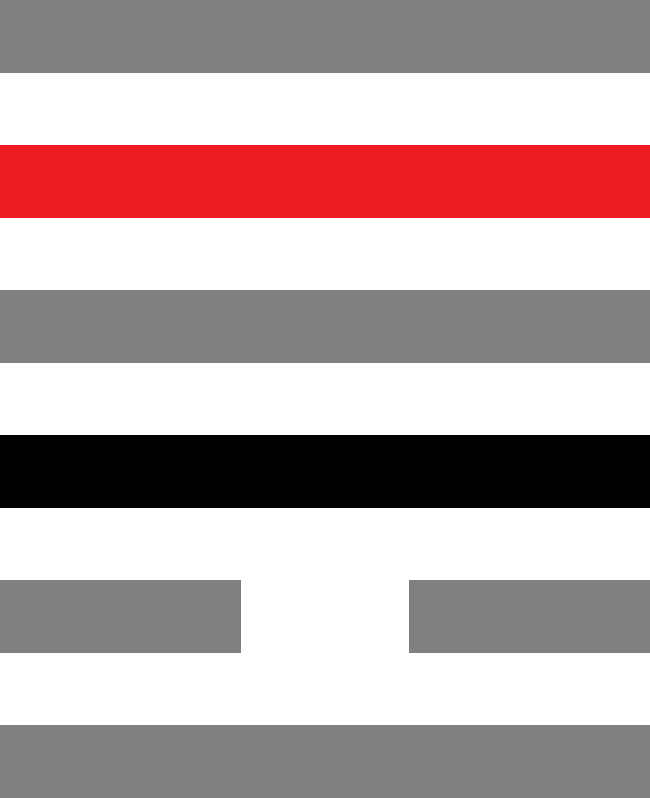 Profile 3 / 5
Profile 3 / 5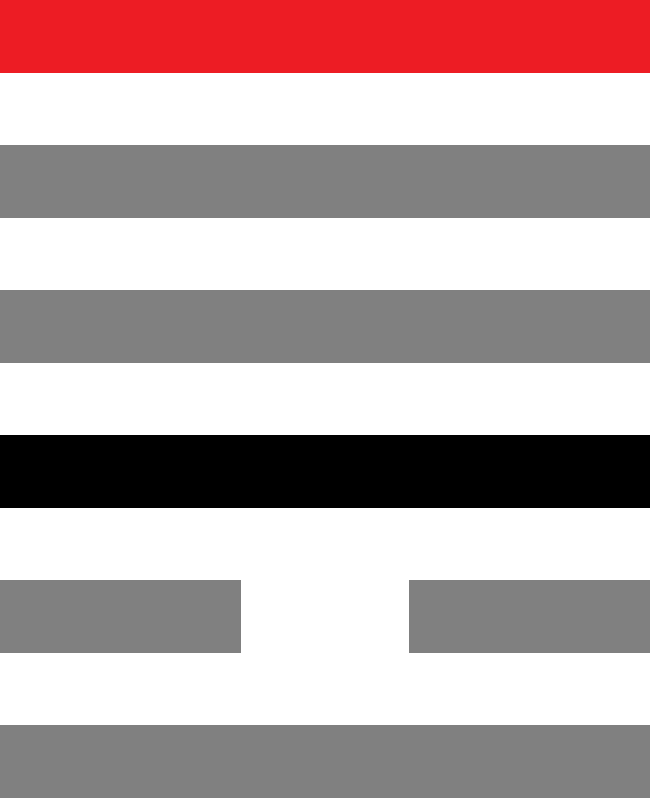 Profile 3 / 6
Profile 3 / 6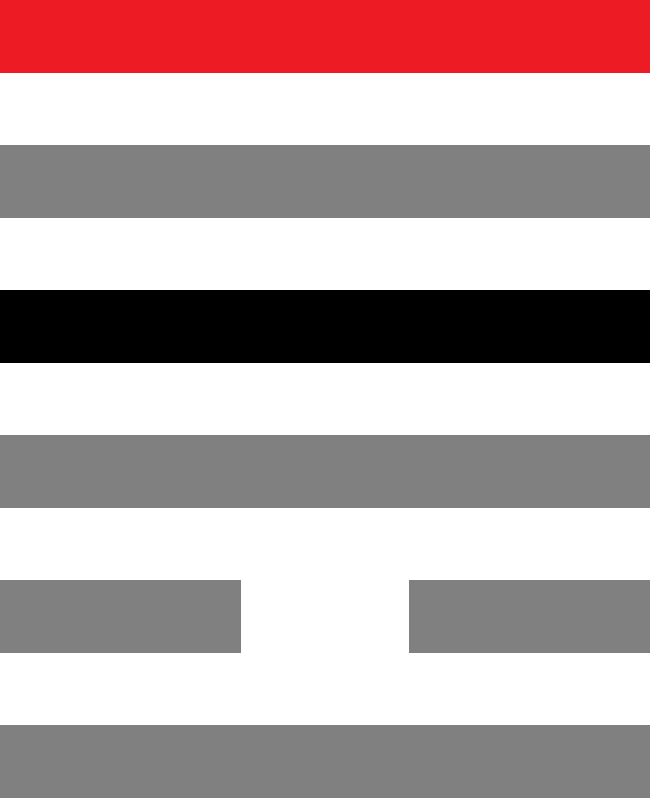 Profile 4 / 6
Profile 4 / 6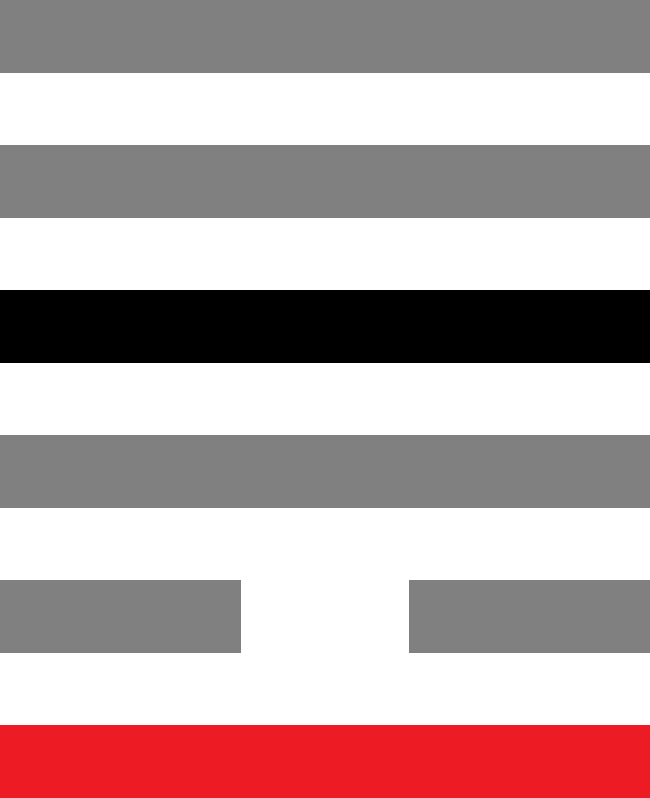 Profile 4 / 1
Profile 4 / 1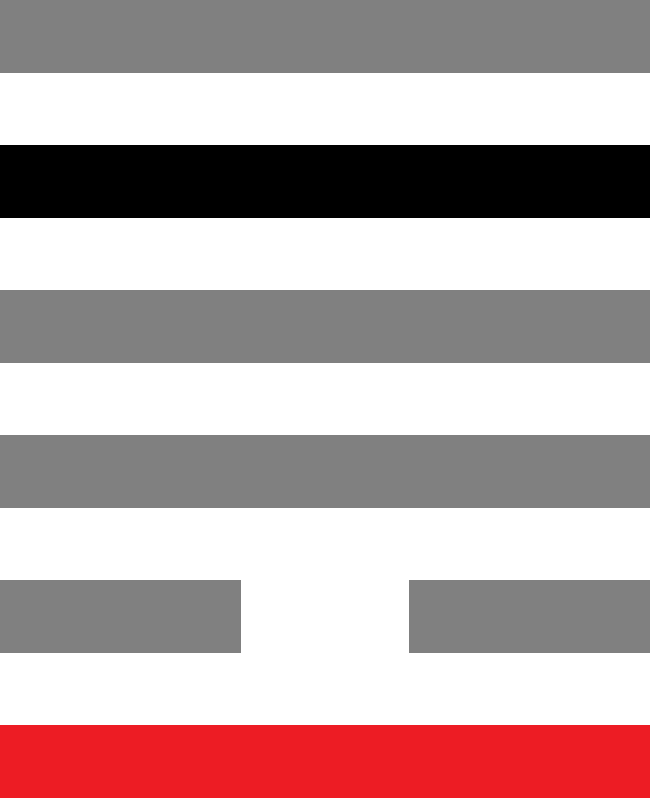 Profile 5 / 1
Profile 5 / 1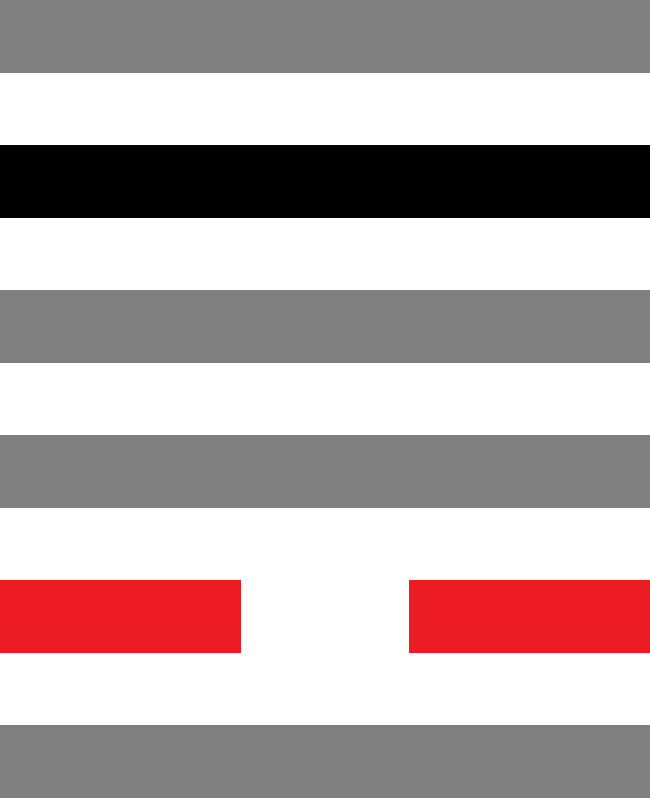 Profile 5 / 2
Profile 5 / 2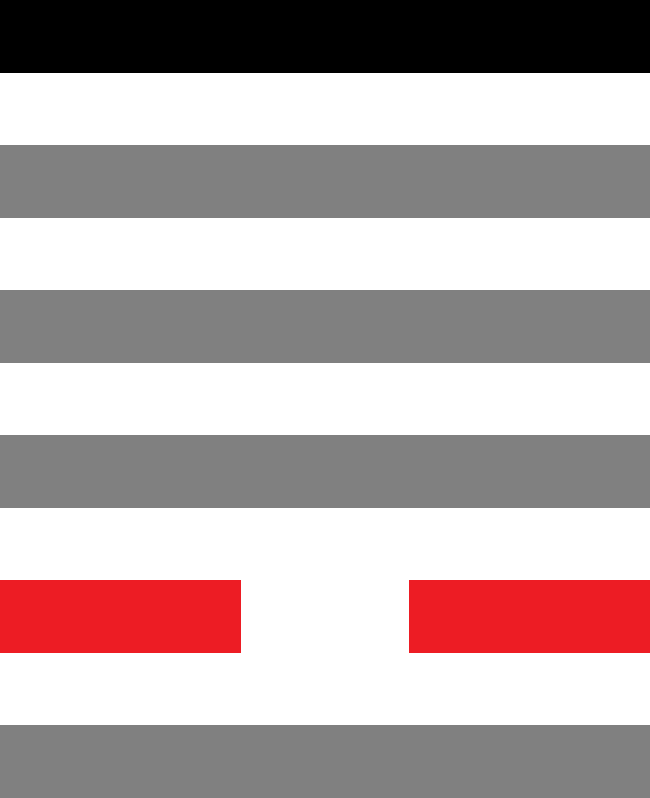 Profile 6 / 2
Profile 6 / 2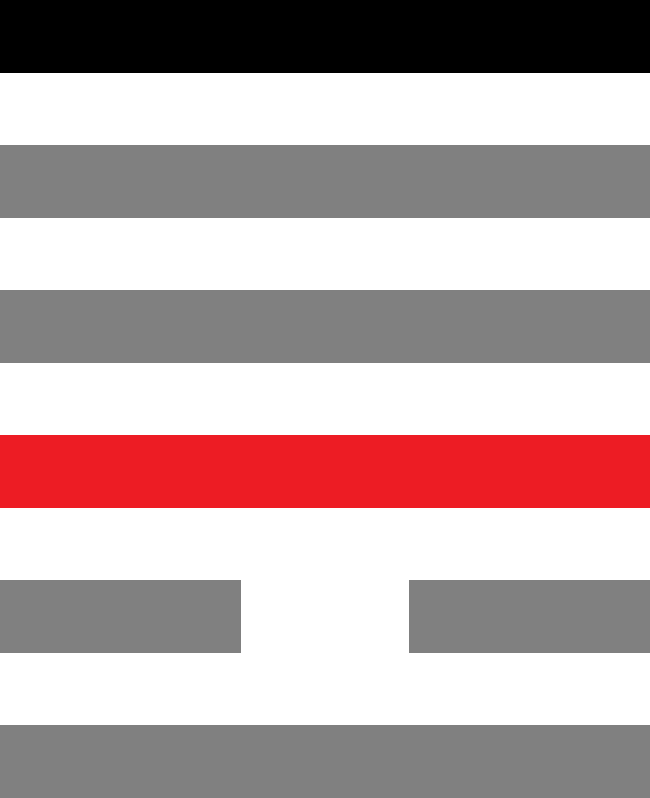 Profile 6 / 3
Profile 6 / 3